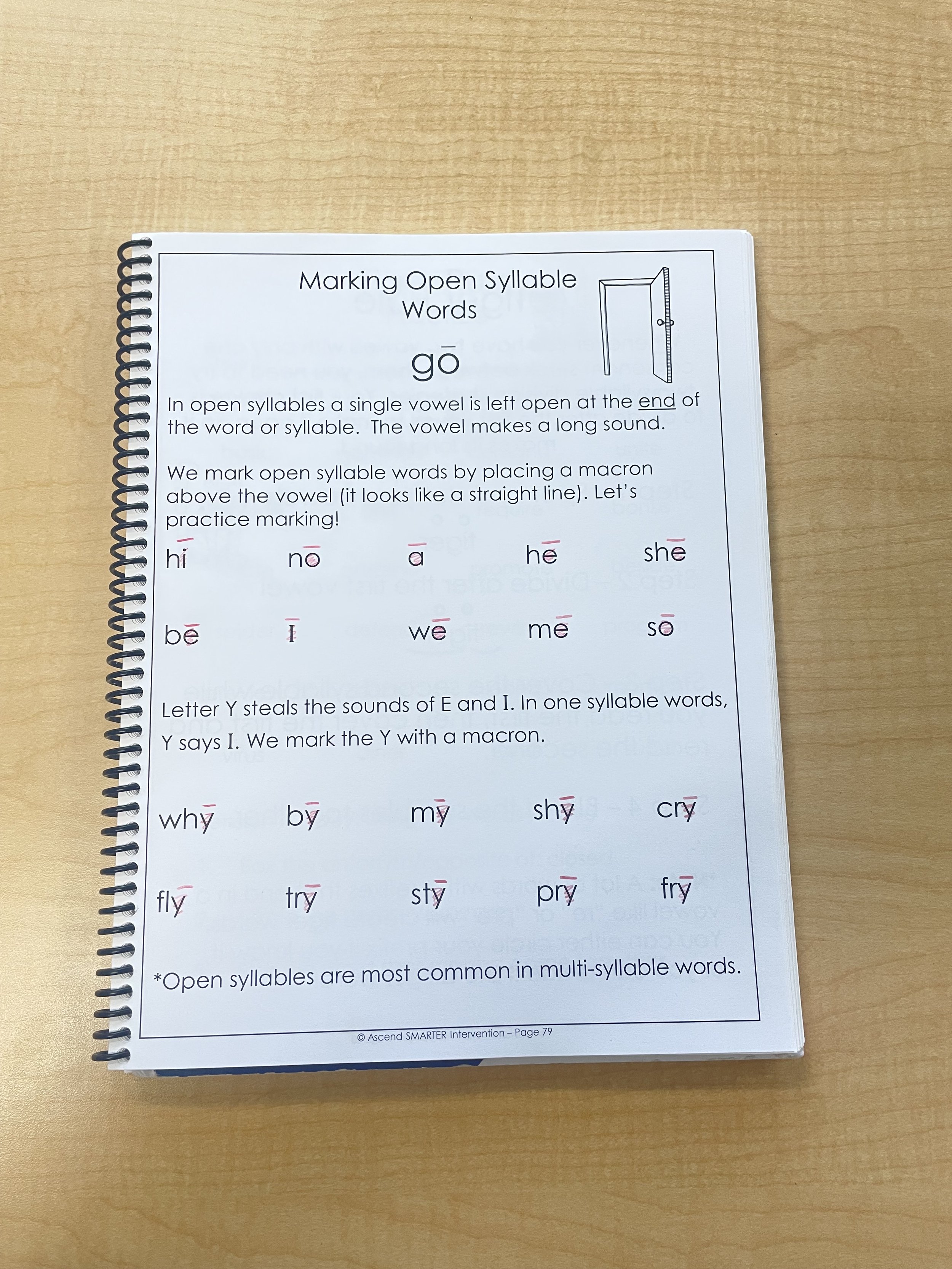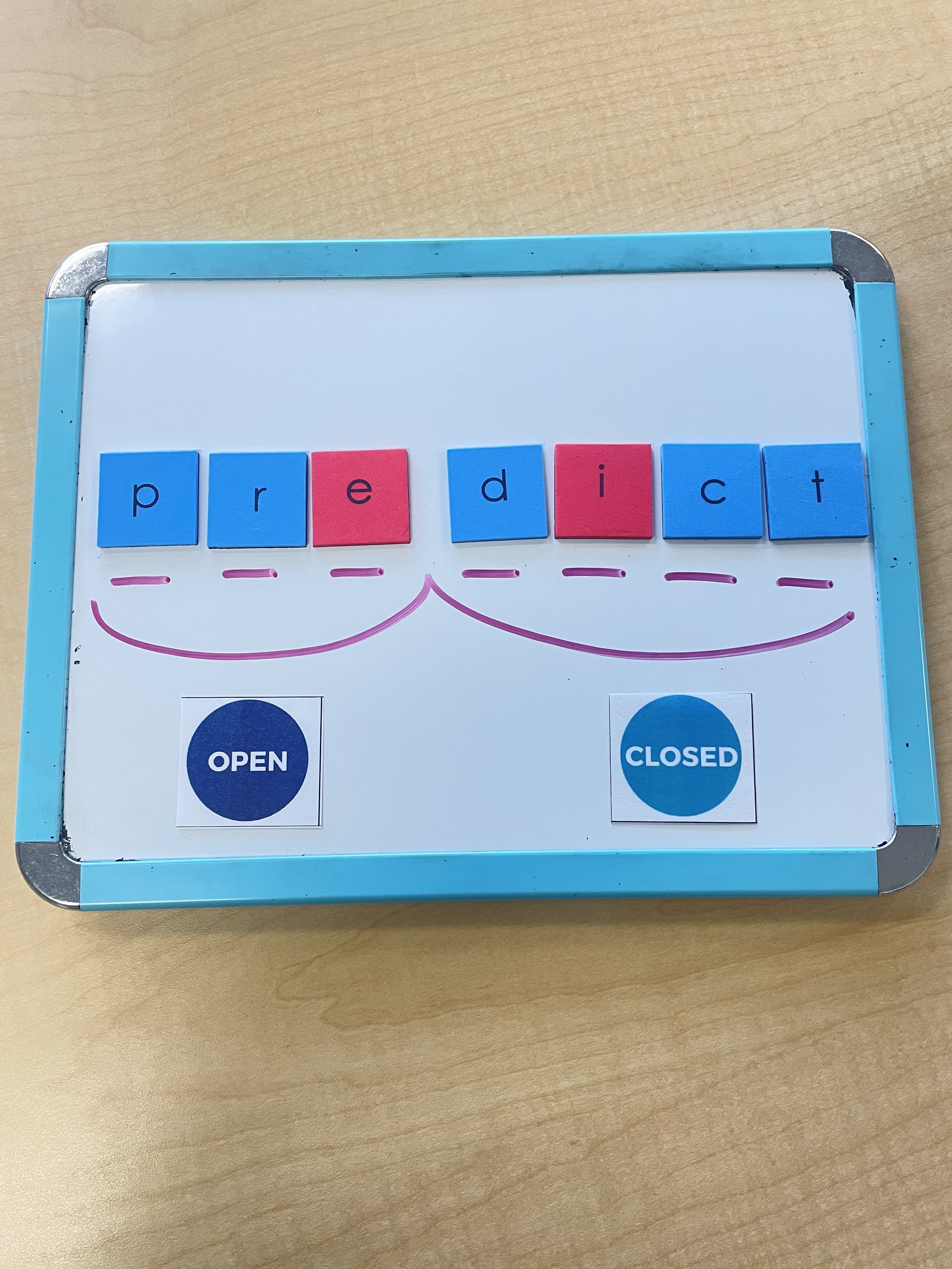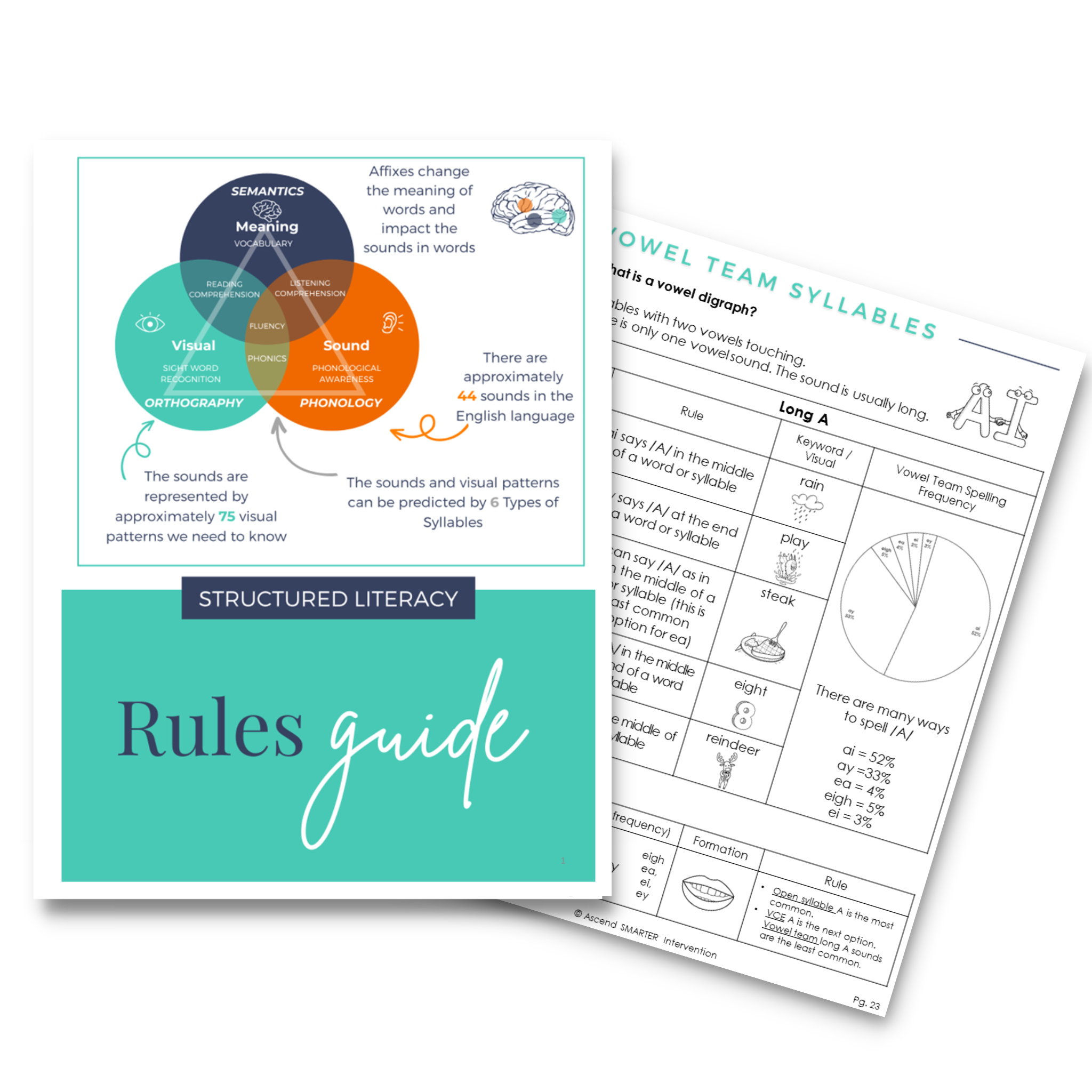Open Syllables - The Reading and Spelling Rules That Nobody Taught You
If you’ve been following along, you know that there are so many reading and spelling rules we never learned (until we stepped into the world of structured and systematic literacy instruction!).
Because there are SO MANY rules, we like to organize them into the six syllable types.
Never heard of the six syllable types? No worries at all, you can read more about them here! Syllable types are important because they help to predict the vowel sound (which is usually the toughest part of reading and spelling!).
Sometimes vowels create a short vowel sound (typically the case in closed syllables), sometimes they create a long vowel sound, and sometimes they create a different sound altogether.
Today we are talking about -
Open Syllables
An open syllable occurs when you have one vowel that is left open or free at the end. There are no consonants blocking in the vowel. The vowel sound is long (i.e., it says its name, A, E, I, O, or U.) For example, “hi,” “no,” “she,” “he,” “we,” and “so.” Pretty simple, right? These syllables can also be found within words. For example, words like tiger have an open syllable at the front (ti). Even though the vowel is in the middle of the word, it is considered open because the vowel is at the end of the syllable! Click here to learn more about how we cover the syllable division strategies that align with this.
How To Teach Open Syllables - Reading Process
We always follow a step-by-step process to teach open syllables:
1 - Find/color the vowel in red
This is important because we need to be able to visually see the vowel in order to determine what type of syllable we have.
2 - Determine whether any consonants follow the vowel
If there are no consonants following the vowel, this means the vowel is left “open.” This can also occur when you divide words using the “tiger” syllable division process.
3 - If a vowel is left open, mark the vowel with a macron
A macron looks like a straight line. It signals that the vowel sound is long (as in the vowel’s name)
4 - Read the syllable (remember the vowel sound is long)
If there are multiple syllables, blend each syllable together to read the entire word. A syllable is a word or part of a word with one vowel sound so if there is more than one vowel followed by a consonant, the word has more than one syllable.
How To Teach Open Syllables - Spelling Process
When teaching spelling, we like to use a 4-Step Process:
1 - Identify how many syllables are in the word
We like to have students scoop the syllables, this is important because each syllable needs at least one vowel sound (which might be an open syllable!)
2 - Identify how many sounds are in the word
We like to have students underline or dot the number of sounds they hear.
3 - Identify the type of sound
Is the sound a vowel sound or a consonant sound? Is the vowel sound short or long?
4 - Identify the type of syllable
This is important because specific syllable types have specific spelling rules. There are a few spelling patterns that are specific to open syllables.
Open Syllable Spelling Patterns
Let’s take a look at a few of the spelling rules that are specific to open syllables:
Long Vowel Spelling Options
We use an open syllable 46% of the time to make the Long A sound (otherwise we use a vowel team)
We use an open syllable 41% of the time to make the Long E sound (otherwise we can use Y or a vowel team)
We use an open syllable 38% of the time to make the long I sound (otherwise we can use Y or a vowel team)
We use an open syllable O 46% of the time to make the Long O sound (otherwise we use a vowel team)
We use an open syllable U 59% of the time to make the Long U sounds.
Y as a Vowel
Another skill we target in this syllable type is Y as a vowel! When Y is at the end of a word, it acts like a vowel (in open syllables). In single syllable words the Y will say /I/ as in cry. In multisyllable words the Y will say /E/ as in baby.
Explicitly Teaching Open Syllables
We typically start our instruction with closed syllables. Then we progress to vowel-consonant-e syllables because it makes a clear transition from short vowel sounds to long vowel sounds. Then we transition to R-controlled vowels. After that, we introduce open syllables.
We like to hold off on teaching open syllables because while open syllables are VERY common in the English language, most open-syllable words consist of more than one syllable, which makes it more complicated.
When we teach open syllables we almost immediately move into syllable division strategy.
For example, when you see a word like tiger or camel that have a consonant stuck between two vowels, we will need to divide the syllable in two ways ti-ger or tig-er and ca-mel or cam-el. We need to use vocabulary knowledge to determine which word is correct while reading.
We provide a visual with a keyword. For example, if we were teaching the tiger syllable division rule we would provide a picture to show “tiger” and have students practice associating the division rule with the word “tiger.”
We then provide explicit instruction on the rules the pattern follows. For example, the tiger pattern is the most common division pattern for a “VCV” word pattern.
We move in a building progression from the syllable/word level to the sentence level, paragraph level, and beyond.
How do I get started?
If you need help mastering all these rules, we’ve got you. We put all the rules we teach together in our Comprehensive Rules Guide which you can grab here! It’s a fabulous place to get started.
If you’re ready for the next step and you’re looking for comprehensive lesson materials to explicitly teach all of the phonogram patterns, you can check out our systematic phonics-based curriculum, Delivering SMARTER Intervention here.





